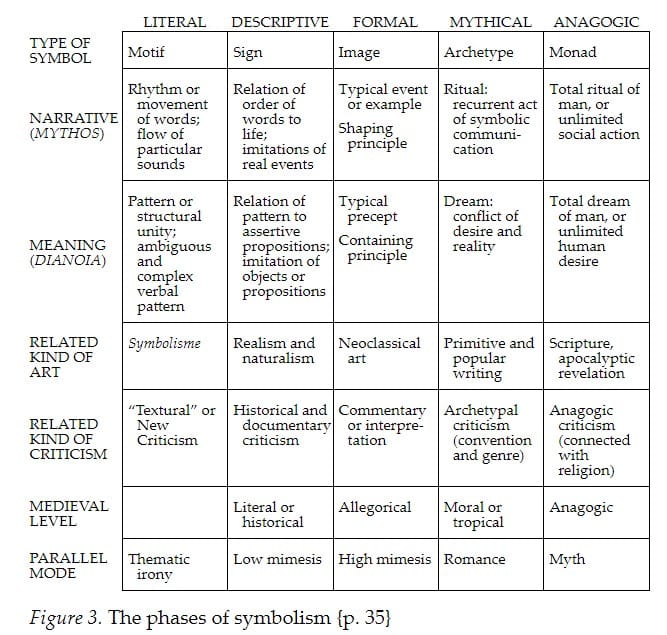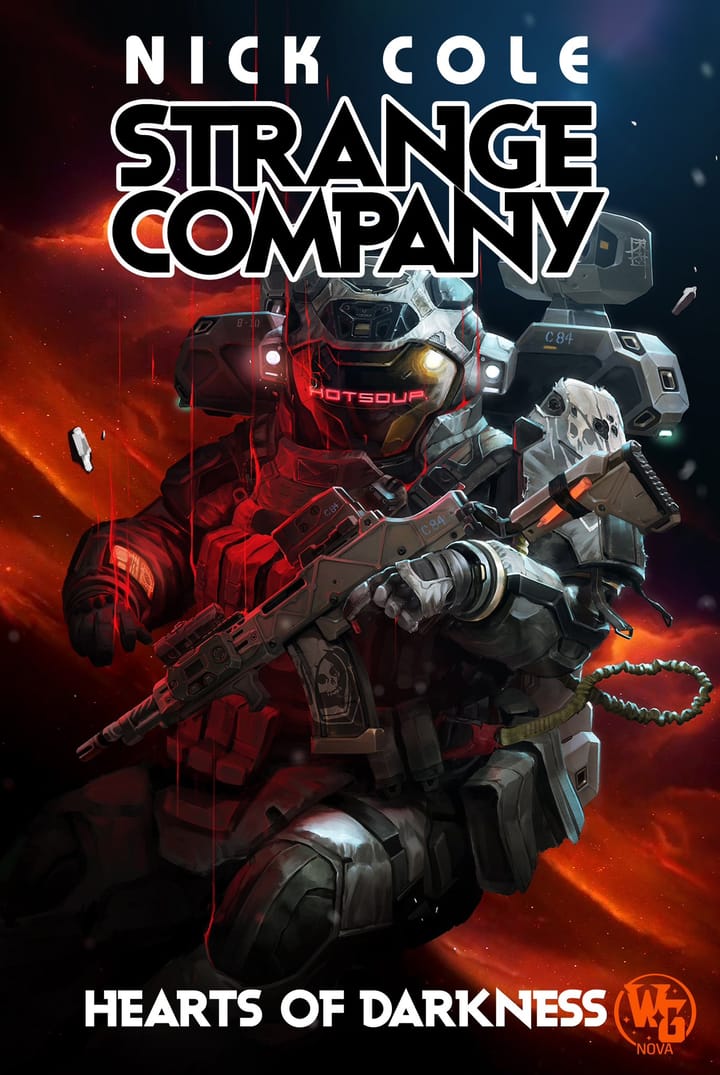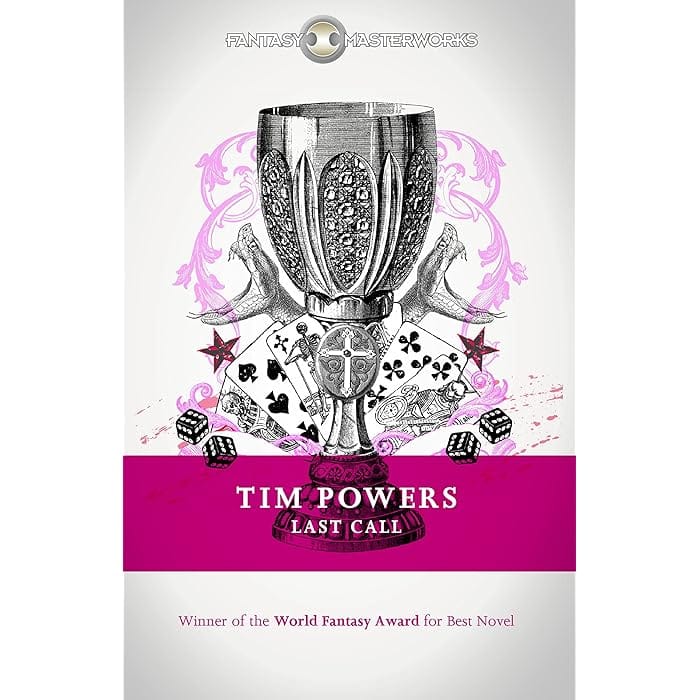Northrop Frye's Second Essay: The Theory of Symbols

In the first essay, which Frye subtitled "Historical Criticism", Frye created his categories by looking at the historical development of heroes and themes. In the second essay, Frye will turn to the different contexts in which we interpret symbols.
Since Frye spends a lot of time coming up with his own terms, he calls those different contexts "phases". Sometimes this is frustrating, but on the other hand sometimes Frye is absolutely correct, such as when he notes that there is no general word for the kind of thing that literature produces:
The fact, already mentioned, that there is no word for a work of literary art is one that I find particularly baffling. One may invoke the authority of Aristotle for using "poem" in this sense, but usage declares that a poem is a composition in metre, and to speak of Tom Jones as a poem would be an abuse of ordinary language. One may discuss the question whether great works of prose deserve to be called poetry in some more extended sense, but the answer can only be a matter of taste in definitions.
--Northrop Frye, Second Essay
Frye is grasping here for a genus. We have good words for the species of literature. Novel. Poem. Epic. Essay. Oration.
But there isn't really a good one that groups them all together in English, other than perhaps the pedestrian "work". Frye didn't go for that one, and I don't blame him.
Things are considerably easier when he gets to "symbol", the subject of his second essay.
The other matter concerns the use of the word "symbol," which in this essay means any unit of any literary structure that can be isolated for critical attention. A word, a phrase, or an image used with some kind of special reference (which is what a symbol is usually taken to mean) are all symbols when they are distinguishable elements in critical analysis. Even the letters a writer spells his words with form part of his symbolism in this sense: they would be isolated only in special cases, such as alliteration or dialect spellings, but we are still aware that they symbolize sounds. Criticism as a whole, in terms of this definition, would begin with, and largely consist of, the systematizing of literary symbolism. It follows that other words must be used to classify the different types of symbolism.
--Northrop Frye, Second Essay
Frye is going to use different kinds of symbolic analysis to add another layer of meaning into his phase space. Denham again provides us with a picture to help us organize Frye's thought, although as always I will caution that taking this chart too literally will make Frye's ideas seem more rigid than they really are. For example, it would be a mistake to think that you can only approach the romance with archetypal analysis. You can get a lot out of romances using archetypal analysis, but the other types of symbols cannot be ignored.

This point is made by Frye himself:
For there must be different types: the criticism of literature can hardly be a simple or one-level activity. The more familiar one is with a great work of literature, the more one's understanding of it grows. Further, one has the feeling of growing in the understanding of the work itself, not in the number of things one can attach to it. The conclusion that a work of literary art contains a variety or sequence of meanings seems inescapable.
--Northrop Frye, Second Essay
Frye's objective here is to bring all of the various schools of symbolic interpretation into harmony. He does not however want to create a hierarchy. Each method of interpretation unlocks a specific kind of symbol for us, so you need them all.

The principle of manifold or "polysemous" meaning, as Dante calls it, is not a theory any more, still less an exploded superstition, but an established fact. The thing that has established it is the simultaneous development of several different schools of modern criticism, each making a distinctive choice of symbols in its analysis. The modern student of critical theory is faced with a body of rhetoricians who speak of texture and frontal assaults, with students of history who deal with traditions and sources, with critics using material from psychology and anthropology, with Aristotelians, Coleridgians, Thomists, Freudians, Jungians, Marxists, with students of myths, rituals, archetypes, metaphors, ambiguities, and significant forms. The student must either admit the principle of polysemous meaning, or choose one of these groups and then try to prove that all the others are less legitimate.
--Northrop Frye, Second Essay
In our next installment, I will look at the literal and descriptive phases, which Frye always refers to together, like two sides of one coin.



Comments ()